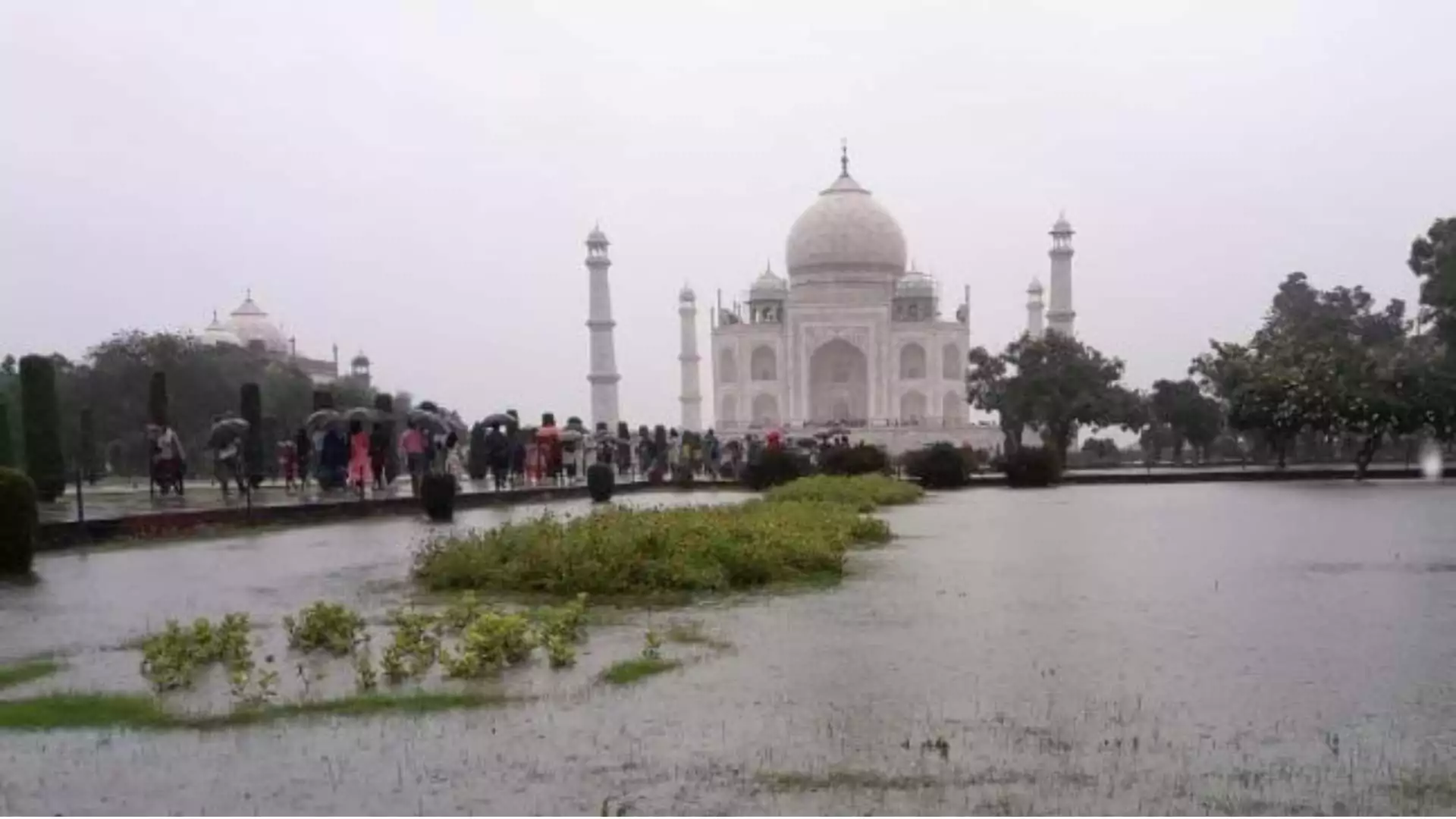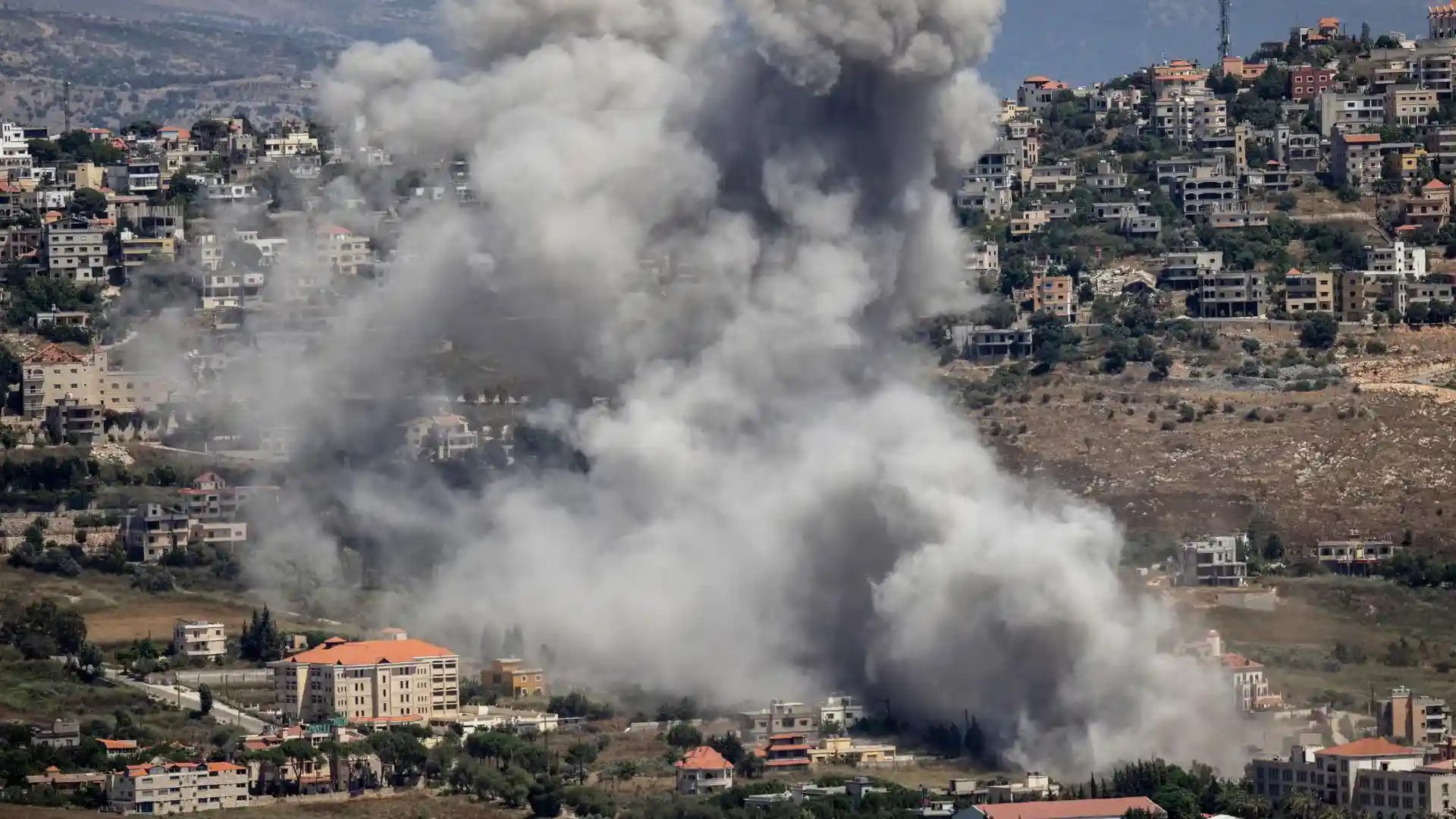The Taj Mahal, one of India’s most iconic monuments, experienced water leakage from its main dome due to continuous heavy rainfall in Agra over the past three days. The rain also caused significant flooding in the monument’s garden, catching the attention of both locals and tourists. The Archaeological Survey of India (ASI) confirmed the leak, assuring the public that no structural damage has occurred.
Leakage from Main Dome Due to Seepage
Rajkumar Patel, Superintending Chief of the ASI, Agra circle, addressed concerns regarding the leakage from the Taj Mahal’s main dome. Speaking to the media, Patel stated, “Yes, we observed leakage in the main dome of the Taj Mahal. Upon inspection, it was found to be caused by seepage, and no damage has occurred. We verified the condition of the dome using a drone camera.” The ASI’s swift response and the use of modern technology like drones to assess the situation provided some reassurance, though the incident raised concerns about the monument’s maintenance amid changing weather patterns.
Viral Video Highlights the Extent of Waterlogging
On Thursday evening, a 20-second video of one of the Taj Mahal’s gardens submerged in rainwater went viral on social media. The video, widely shared and discussed, drew the attention of tourists visiting the site. Many visitors filmed the scene as the rainwater filled the garden area, which is usually admired for its well-kept landscaping. The spectacle of a waterlogged Taj Mahal garden left many visitors concerned about the preservation of the monument.
MUST READ: EAM Jaishankar’s Personal Experience With The 1984 Flight Hijacking
Watch video here:
🚨🇮🇳 | The symbol of love, Taj Mahal, is flooded. The garden situated in the premises of this beautiful building is submerged. It has been raining continuously for the last 24 hours in Agra. Efforts are on to drain out the water.
📌 #Agra | #UttarPradesh | #india#tajmahal… https://t.co/V3YoVyg79y pic.twitter.com/iMTMWxdPv6— Weather monitor (@Weathermonitors) September 12, 2024
Tour Guides Raise Concerns Over Maintenance
Local tour guides, whose livelihoods depend on the Taj Mahal’s thriving tourism industry, voiced their concerns over the monument’s upkeep. A government-approved guide from Agra emphasized the Taj Mahal’s importance not just as a historical symbol, but also as a key economic driver for the region. “The Taj Mahal is a symbol of pride for Agra and the entire nation, providing employment to hundreds in the tourism industry,” the guide remarked.
Monika Sharma, another government-approved guide, echoed these concerns, stressing the need for proper care and attention to the monument. “Proper care must be taken of the monument, as it is the only hope for those in the tourism sector,” she stated. The recent rains, while a natural event, have amplified worries about the monument’s resilience and the impact of climate change on such historic structures.
Widespread Rainfall Disrupts Life in Agra
The heavy rainfall in Agra over the past three days has not only affected the Taj Mahal but also caused disruptions throughout the city. Several areas have experienced severe waterlogging, including upscale neighborhoods and a major national highway that was flooded. Crops have also been submerged in rural areas surrounding the city, leading to concerns about agricultural losses. The situation remains tense as the city grapples with the aftermath of the heavy downpour.
The Taj Mahal: A Symbol of Eternal Love and Mughal Architecture
The Taj Mahal, a UNESCO World Heritage Site, was constructed between 1632 and 1653 by Mughal Emperor Shah Jahan in memory of his wife, Mumtaz Mahal, who passed away during childbirth. This architectural marvel, renowned for its stunning white marble dome and intricate craftsmanship, is a blend of Persian, Islamic, and Indian styles. The monument’s complex includes four minarets, lush gardens, and a reflecting pool, all designed to enhance the grandeur of the mausoleum.
Often regarded as one of the most beautiful buildings in the world, the Taj Mahal symbolizes eternal love and devotion, attracting millions of visitors every year from across the globe. It stands as a testament to the architectural and artistic brilliance of the Mughal era, and any threats to its preservation—whether from natural forces or human negligence—are met with concern.
While the recent rainfall and subsequent leakage from the Taj Mahal’s dome caused momentary concern, the assurance from ASI officials that no damage has occurred has provided some relief.

















